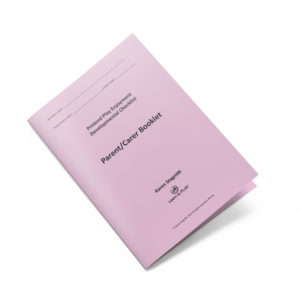Learn to Play Therapy: Principles, Process and Practical Activities
$263.00 GST incl
314 pages with colour pictures, dividers to separate sections, spiral bind finishing, QR code listed in the book access the website to download the reproducible pages, which include the 114 play activity pages, the parent handouts, and a Play Background Checklist. Published in 2021.
Learn to Play Therapy: Principles, Process and Practical Activities is a complete rewrite and second edition of the earlier book ‘Learn to Play: a practical program to develop a child’s imaginative play skills’ previously published by Co-ordinates Publications in 1998. The new, second edition, is 314 pages and is based on a further 23 years of research and clinical work with children aged 12 months to 10 years, who find the ability to pretend in play perplexing and difficult.
Learn to Play Therapy is a practical hands-on therapy which aims to develop the ability of a child to engage in pretend play spontaneously and joyfully. It was developed for children who struggle to play. This book is written for one-on-one therapy with the child and parent.
This book would be valuable to those who work with children, aged 12 months to 10 years, who have a diagnosis of autism spectrum disorder, ADHD, Down’s Syndrome, learning or developmental difficulties, acquired brain injury, and any child who has not developed the ability to pretend in play. Research and clinical work have identified that Learn to Play Therapy can be effective for children who meet the minimum requirements of 12 – 18 months developmental level with at least one meaningful word/gesture/or focussed attention.
Learn to Play Therapy focusses on pretend play because pretend play involves the negotiation of meaning, the sustained imposition of meaning on toys and play props, and the creation of play scenes that involve characters and/or the child playing a role. Pretend play has established links to language, narrative, social competence, creativity, self-regulation, executive function, and creativity.
This book outlines the theoretical underpinnings, the principles and the process of therapy, with 114 play activity pages as examples of pretend play activities from early play development to more complex pretend play.
Chapters 1 to 3 are written to be read in sequence as knowledge is layered by unfolding the concepts and process that underpin Learn to Play Therapy. Case studies are spread throughout the text to illustrate how to identify children who would benefit as well as the process within therapy. One chapter is dedicated to four in-depth case studies. There are chapters on working with parents, working with older children aged 7 to 10 years, and a question-and-answer chapter.
The practical section of the book explains how to use the play activities, with reference to Chapters 1 to 3. Play activities covered in this book are: engaging children in play; pre-pretend play activities; sequences of play actions; describing and explaining; object substitution; doll/teddy play; play scripts; role play; social pretend play; attributing properties and absent objects; and problems in the play and where to next.
A QR code is listed in the book to access the website to download the reproducible pages, which include the 114 play activity pages, the parent handouts, and a Play Background Checklist. The Play Background Checklist can be used in conjunction with the Pretend Play Enjoyment Developmental Checklist or the Child-Initiated Pretend Play Assessment 2. A play assessment is essential to ascertain where therapy begins.
Training workshops on Learn to Play Therapy are also available, depending on demand, and are offered online or face to face, see Workshops.
About the Author

Karen Stagnitti PhD, BOccThy, GCHE. Karen is an occupational therapist by training who has a very strong interest in children’s play. Find out more about Karen
Additional Information
- ISBN 978 0 9944647 9 8









